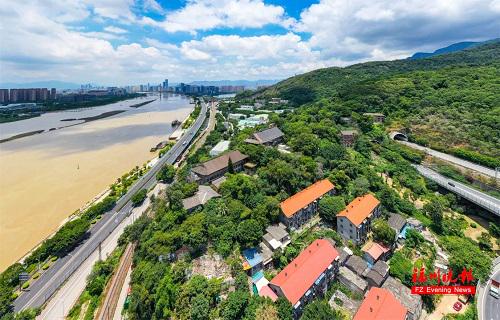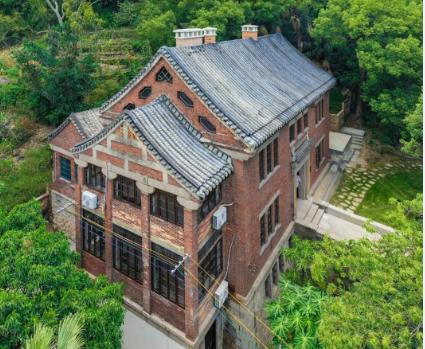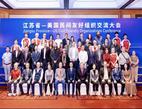A recent report of Fuzhou Evening News said, “To welcome the 44th World Heritage Conference, the exhibition arrangement in President Building of the Fukien Christian University was completed the on July 15...”
The 16-building complex of Fukien Christian University (see the first attached picture) is located in Kuiqi Village in Fuzhou, Fujian Province. Walking up the winding steps, we can see a number of red-brick buildings, and the highest red-brick building is the President Building of Fukien Christian University, facing the south, and with a total of two floors and an attic.
In 1911, Dr. John Goucher, president of the higher education committee of the World Missionary Conference, went to Fuzhou to establish a university in conjunction with the six churches of Fujian Christianity. The school board was established in 1915, with W. L. Beard as its chairman and Aduin C. Jones as its first president. The school was named Fukien Christian University.
In February 1916, the school officially began at the old Russian Tea Shop in Cangqian Mountain, Fuzhou. The number of first-year students was only 81, and there were no girls. There were only five full-time teachers and four part-time teachers. In 1917, the State University of New York (SUNY) recognized the private university as a qualified university and stated that its graduates could also obtain a bachelor’s degree, following the management method of American university graduates. In 1918, in light of the growing scale of the university, the Board of Directors of the Rockefeller Foundation in the United States designated a large sum of money annually for the recruitment of additional professors and the purchase of equipment. In January 1919, the Rockefeller Foundation funded the construction and maintenance of the Science Museum in the school. President Aduin C. Jones’ brother and sister-in-law also donated to build the School of Arts, and for annual book-purchasing funds. In 1922, the school chose to build new buildings in Kuiqi Village, Fuzhou, at the foot of the Gushan Mountain and on the bank of the Minjiang River. Dozens of exquisite buildings with classic oriental charm stood to the east of the river, leaning against the Gushan Mountain, and facing the stream of Minjiang River and the distant green mountains.
Fukien Christian University (1915-1951) had established more than a dozen departments in two schools during its 35 years of operation: The School of Liberal Arts consisted of Literature and History, Western Philosophy, Education and Theology; The College of Science consisted of biology, Chemistry, pre-medical science, mathematics, Agronomy, Agricultural Economics, and Agricultural Sciences. Ye Shengtao, Guo Shaoyu, Dong Zuobin, Lin Lanying, and other famous Chinese and foreign scholars taught in the university. In its 35-year history in the last century, it had cultivated many students who became famous, such as Zheng Zuoxin, Lin Lanying, Huang Weiyuan, and other domestic and foreign academics and a large number of professionals. It was one of the two most famous universities in Fujian Province (the other is known as Xiamen University) at that time.
After the liberation of the People’s Republic of China, the university closed down in 1951 and was disintegrated in the first round of merging of departments. The relevant departments became part of the present Fujian Normal University, Fuzhou University, Fujian Agriculture and Forestry University, and Xiamen University. The school buildings located in Kuiqi Village, Gushan, Fuzhou, the former site of Fukien Christian University, form the largest modern church school complex in Fuzhou and an important exhibit of Chinese and Western architectural culture in modern times. In February 1998, the people’s government of Jin’an District of Fuzhou City listed the school buildings of the private Fukien Christian University as the fourth batch of cultural relic protection units of Jin’an District and cultural relic protection units of Fujian Province and protected them as historical heritage.
In May 2015, when a priest visited Gushan in Fuzhou, he said, “When the foreign missionaries preached in Fuzhou, many small foreign-style houses built with small square stones can be called 'summer resort' in Gushan (Guling, etc.) in Fuzhou. As a summer resort in summer, my uncle chose not to go back to Zhangzhou in summer and winter vacations, but went to the foreign missionaries’ homes in Gushan Mountain to do some housework (watering flowers, doing chores, etc.) and earn a little to cover living expenses through a work-study program...” After he got a master’s degree in theology from Fukien Christian University, he returned to Zhangzhou Dongbanhou Chapel to continue pastoral work.
(Some of the data and photos in the article are from the Internet and the News Network of Union College of Fujian Normal University.)













